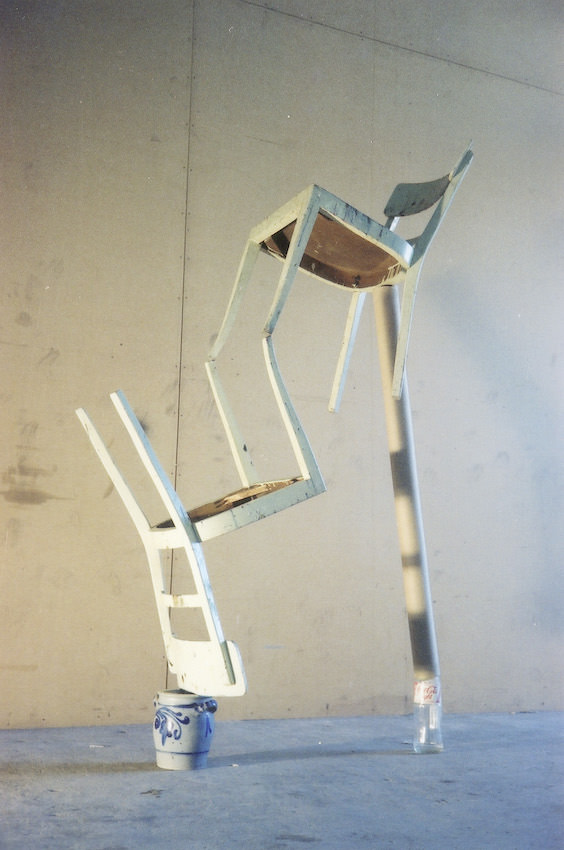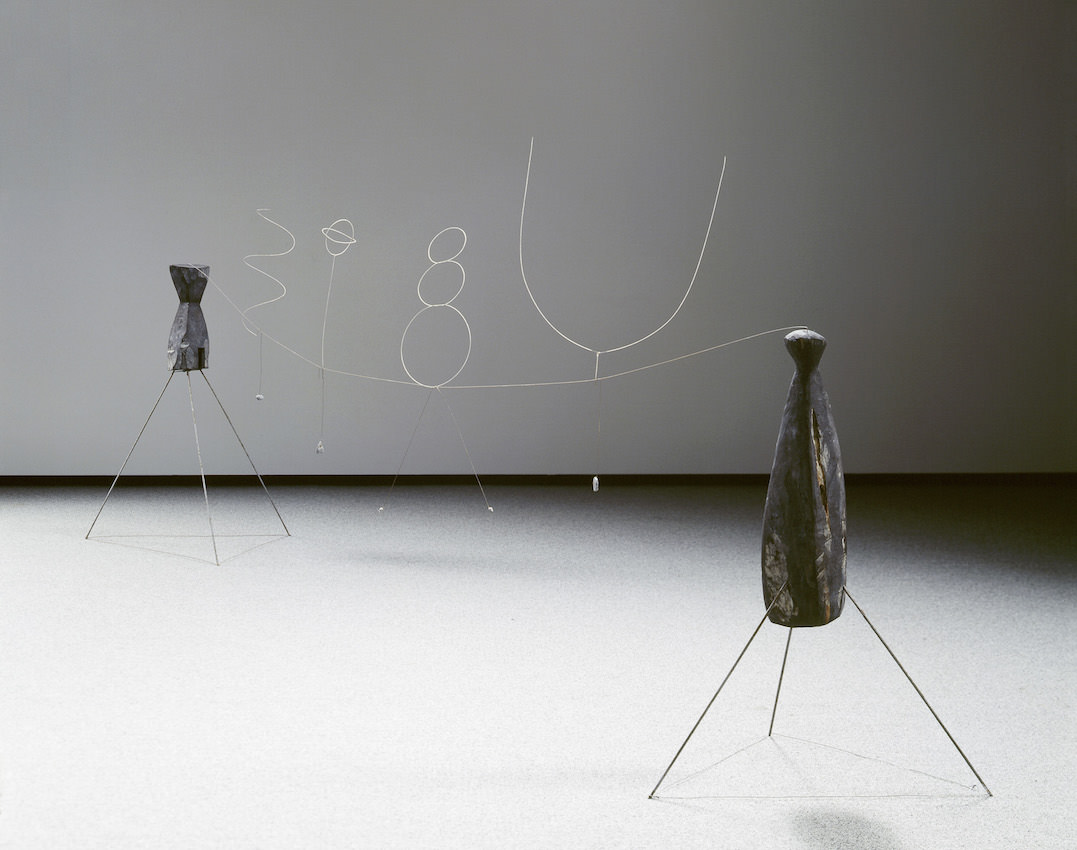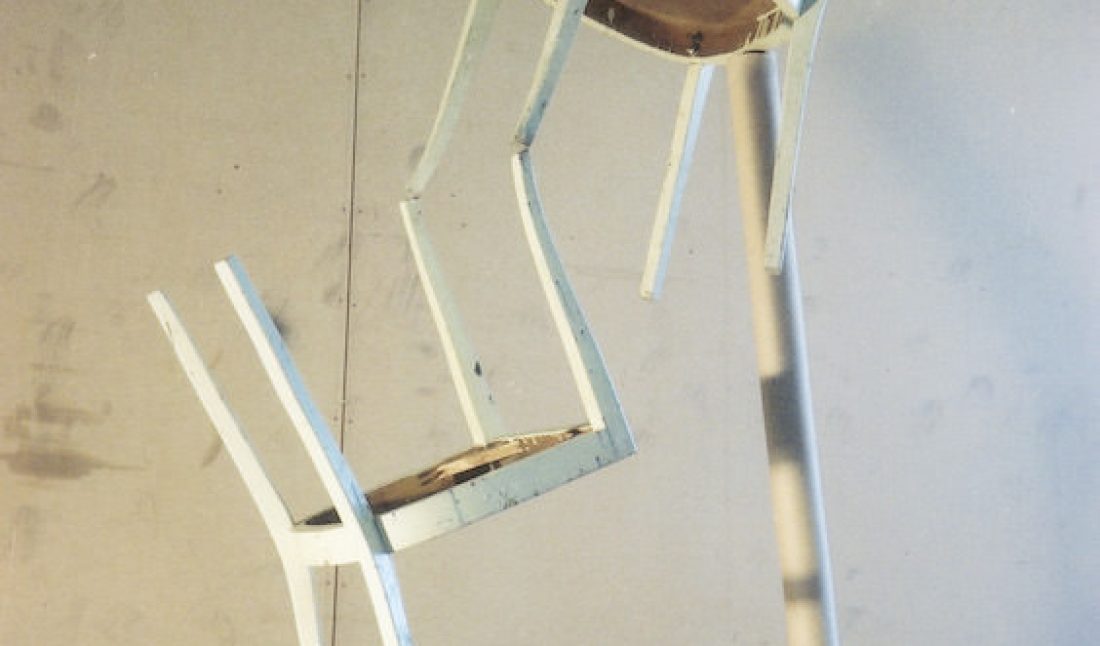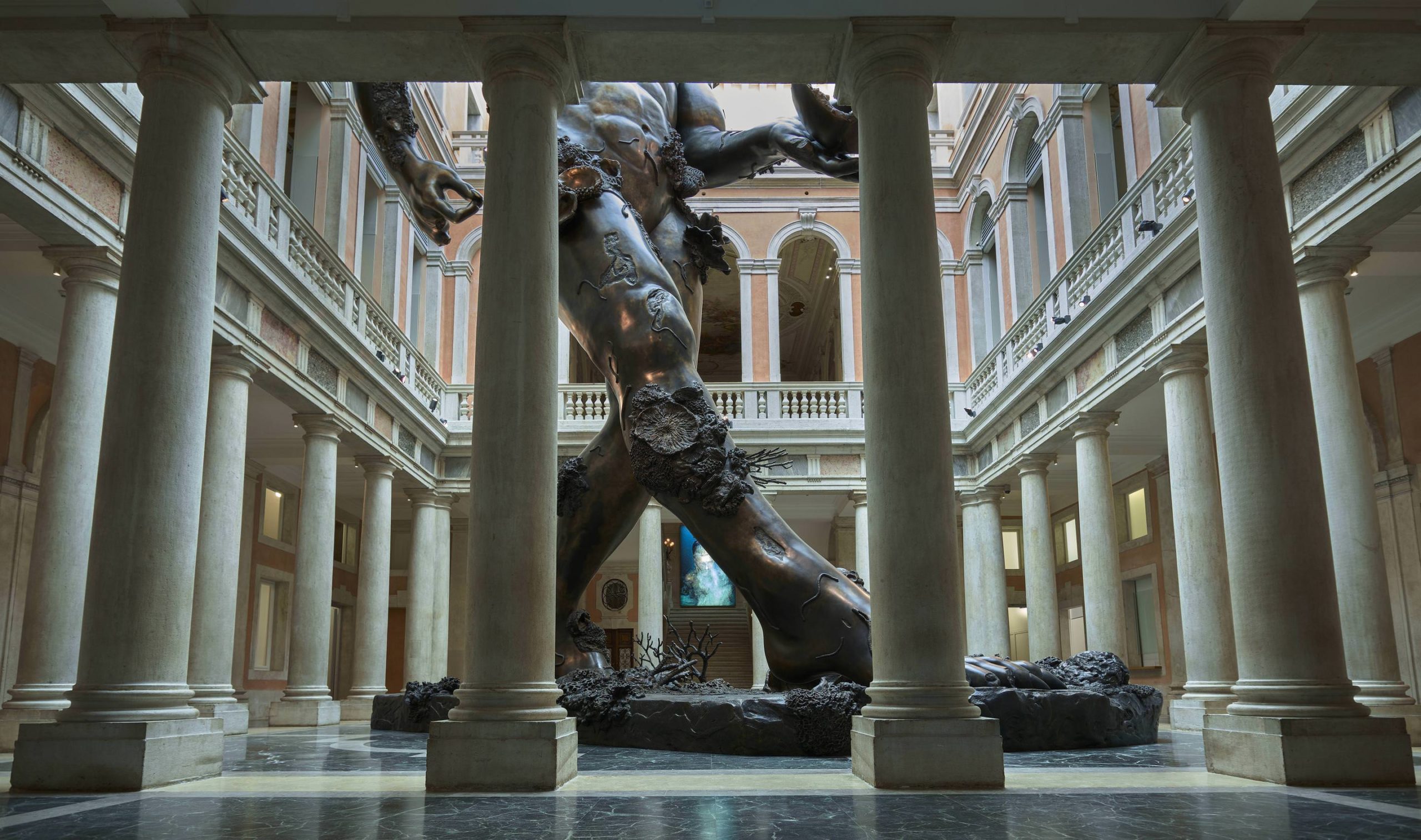A must every year during Art Basel is a visit to the Fondation Beyeler, the fantastic collection and exhibition space designed by Renzo Piano. On view during the fair this time around (and through September 4, 2016) is the show “Calder & Fischli/Weiss.” A seemingly curious pairing, the show offers a unique perspective on Calder’s art when juxtaposed by the collaborative work of Swiss artists Peter Fischli and David Weiss—recently the subject of a Guggenheim retrospective. We spoke with Fondation Beyeler’s director Sam Keller about the exhibition that captures the momentary excitement and volatility of balance explored by the artists working decades apart.
WHITEWALLER: The upcoming show at Fondation Beyeler offers a connection between Alexander Calder’s work and the work of Fischli/Weiss. What connections do you see in their work, which is separated by decades?
 Exhibition view of “Calder & Fischli/Weiss”
Exhibition view of “Calder & Fischli/Weiss”Photo by Laurent Moisi
SAM KELLER: Calder is the master of fragile equilibrium in modern art. His works are the epitome of balance between gravity and weightlessness. The beauty of his art lies in the concurrence of factual balance, which had to be sought and found anew in every work, and the seemingly endless variation of visualizations he created in the process. In Fischli/Weiss’s work, the phenomenon of fragile balance is rendered in an iconic form of quite a different nature. Compared to the elegance and confidence of modern art’s grand gestures, as represented by Calder’s mobiles, Fischli/Weiss created imagery in which imponderables and stumbling blocks have gained the upper hand, and volatility and fortuity have become effective and tireless teammates.
At first sight, the two oeuvres appear to have little in common, but on closer inspection, it becomes clear that we are dealing with two sides of the same coin, minted from differing perspectives and at different times, but covering the same theme.
 Peter Fischli David Weiss
Peter Fischli David WeissWW: Calder passed away in 1976, and Peter Fischli and David Weiss started working together three years later in 1979. Was Calder’s work ever an overt inspiration point for Fischli/Weiss?
SK: The phenomenon of fragile and precarious balance is not confined to a specific moment in time; we are all familiar with it. It is close, timeless, and contemporary. In the early 1980s, the artist duo of Peter Fischli and David Weiss began assembling, from tools and other objects of daily use, awkward constellations on the brink of imbalance that had to hold steady at least until caught on camera. Equilibres became a key series for Fischli/Weiss, giving rise to the idea for a film in which the collapse of one construction served as the generator of the following formation, whose disintegration, in turn, provided the impulse for the next equally impossible constellation, and so forth.
But what happens when we bring together such disparate pictorial worlds and mindscapes? Can a dialogue grow from such an encounter—and, if so, what kind of dialogue? The idea of the exhibition was to explore the significant moments of this precarious balance in both oeuvres and to display them. Peter Fischli and David Weiss, who began their collaboration in 1979, belong to a different generation from the artists Ernst Beyeler was used to working with. Thus, the present exhibition is Fischli/Weiss’s premiere at Fondation Beyeler, although their marvelous polyurethane sculpture False Idols (1983) was included in the abovementioned “Sculpture in the Twentieth Century” show, and five rubber objects they created in 1986 were exhibited at Galerie Beyeler in the same year, in the exhibition “Swiss Selection / Schweizer Künstler.”
WW: You’ve said of your position at the Fondation Beyeler that you’ve really found your dream job. What about being the director of a museum clicked so well for you?
SK: Almost everything. It starts with working in a place which looks and feels like paradise and ends with the quality time spent with some of the finest and most inspiring people on the planet. I particularly enjoy the close collaboration with artists, colleagues and philanthropists. Conserving and developing a world-class collection of modern and contemporary art has been a new and very rewarding responsibility. At Fondation Beyeler we have the opportunity to organize an ambitious program of exhibitions, cultural events, education and public art project. Recently we have started to work with 11 innovative architects on plans for an expansion in a beautiful historical park adjacent to ours. In this job, almost every day brings new experiences and adventures. With what we do, we can make a contribution to society and touch the life of many people. I love it.











